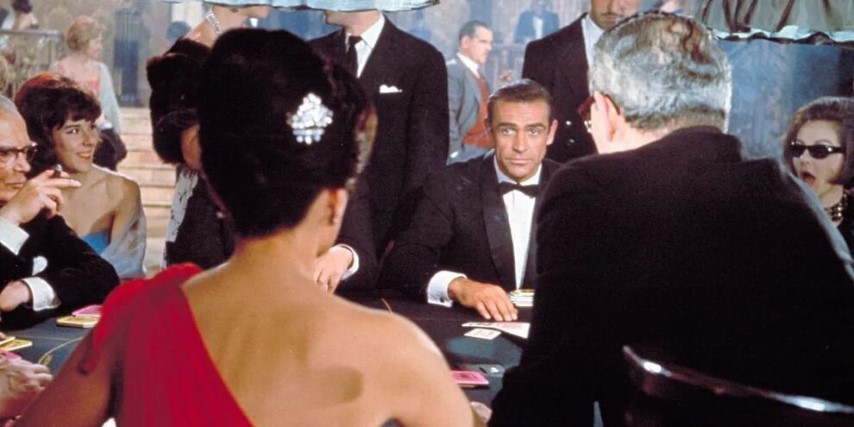The Casino Scene from the Movie Casino
When practically everyone hears the name Martin Scorsese, the first thing that springs to mind is the films in this renowned American director’s body of work that depict the way of life of Italian-American criminals. Casino, a story of deception, power, and greed set in the world’s gambling capital, is not far behind Goodfellas as his most well-known film in this genre. However, Goodfellas is arguably his most well-known film.
Casino, which was based on Nicholas Pileggi’s book Casino: Love and Honor in Las Vegas and was published in 1995, was a far bigger commercial success than Goodfellas while receiving similar critical acclaim. The film Casino is based on the book Casino: Love and Honor in Las Vegas. The video has such a broad reach and a running time of more than three hours, which means it has a wealth of knowledge that will undoubtedly surprise and astonish everyone who has seen it.
The location at the center of this narrative is without a doubt the most important piece of information. The day-to-day operations of the imaginary Las Vegas venue known as The Tangiers play an important part in the main plot of the film Casino.
The Stardust was one of four venues owned by Frank Rosenthal, the real-life character who provided the inspiration for Robert De Niro’s Sam Ace Rothstein persona. This establishment was inspired by The Stardust. The now-defunct Riviera Hotel and Casino in Winchester served as the site for all interior sequences in Casino, including those in the roulette room and the café. The Landmark cinema, which has since closed its doors, was used for all of the film’s outside images. As a result, the setting that the audience sees in the film is a hybrid of these two hypothetical places.
Saul Bass was in charge of creating the opening titles for Casino
Saul Bass is without a doubt one of the most important graphic designers to come out of the United States. Throughout his four-decade career in Hollywood, he worked with several of the industry’s most renowned names, including Stanley Kubrick, Billy Wilder, Alfred Hitchcock, and Martin Scorsese.
Bass is in charge of developing the title sequences for four of the director’s films, including Casino, the Age of Innocence, Cape Fear, and Goodfellas. His work on Casino is unique in that, instead of using optical approaches, he experimented with computational effects for the first time in the opening sequence. The ultimate product was a James Bond-style opening with plenty of red and flashing lights.
After the Film Casino, it was almost decided to publish the book
After the success of Goodfellas, which received six Academy Award nominations, Scorsese was under growing demand to create another crime picture. Scorsese had previously partnered with De Niro on a project that was quite similar to Mean Streets, which was created decades earlier.
As a result, he enlisted the help of criminal reporter Nicholas Pileggi, author of the book Wiseguy, which served as the inspiration for the film Goodfellas. Despite the fact thatEven though Pileggi had previously finished Casino: Love and Honor in Las Vegas and had handed it to Scorsese to read, the book was not yet widely available. It was available for purchase in October 1995, six weeks before the film’s theatrical premiere.
Pesci is quite similar to Tony Spilotro
After having make-up and a wig applied to Joe Pesci, the violent psychopath known as Anthony Spilotro, also known as Tony the Ant, who was represented in the film by Nicky Santoro and who was acted by Pesci, appeared to be virtually indistinguishable from the actor. Nicky Santoro was portrayed in the film by Pesci. The nickname “the Ant” was given to Spilotro because he was relatively short. Pesci was three inches taller than him, and he was just a hair over five feet tall himself. Pesci was three inches taller than him. Having said that, pit chiefs who had worked with Spilotro in the past and who visited the set while the movie was being filmed believed that there were a lot of striking similarities between the two.
The high-stakes gambler K.K. Ichikawa from the film was modeled after a real person
When Rothstein tries to convince Ichikawa, a Japanese high roller, to stay in Las Vegas for one more night by claiming that a machine has broken down, one of the most hilarious scenes in Casino occurs during this exchange. This is done to provide Ichikawa with the opportunity to play blackjack and blow the money he won at the Tangiers’ tables. In the end, he is successful.
The Ichikawa story contains a kernel of truth because the Ichikawa character is based on the deeds of Tokyo-based real estate billionaire Akio Kashiwagi. Kashiwagi was well-known for his frequent trips to casinos in Atlantic City and Las Vegas, where he would sit at VIP baccarat tables for long periods of time and wager significant sums of money. Kashiwagi was brutally hacked to death with a samurai sword in the country that he called home in the year 1992. He had approximately 150 puncture wounds on his body. Even though the case was never solved, there is a nagging feeling that Kashiwagi’s commitments to the Yakuza, Japan’s most powerful organized criminal organization, were to blame for what happened.
The Real Ace was not enthusiastic about the movie at all
As was mentioned earlier, the movie tells the story of Frank Lawrence Rosenthal, a man who was born in Chicago but eventually made his way to Las Vegas, where he started running betting operations on sporting events. In addition to this, he was the covert operator of four casinos that were controlled by the Chicago Outfit, an organized criminal organization. Rosenthal was able to view an early screening of the movie and noted that it did not contain any information about his work. Additionally, he voiced his disapproval of the scene in which Rothstein juggles, citing the fact that such an event never took place in real life.





